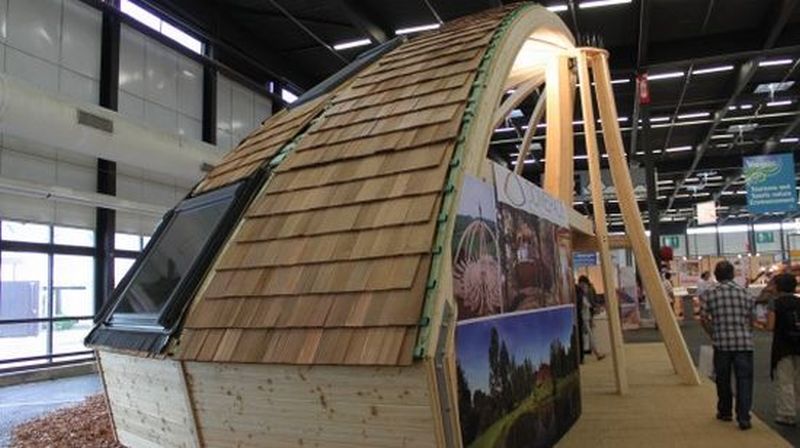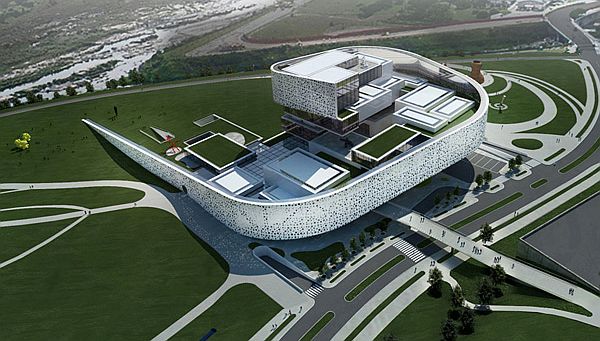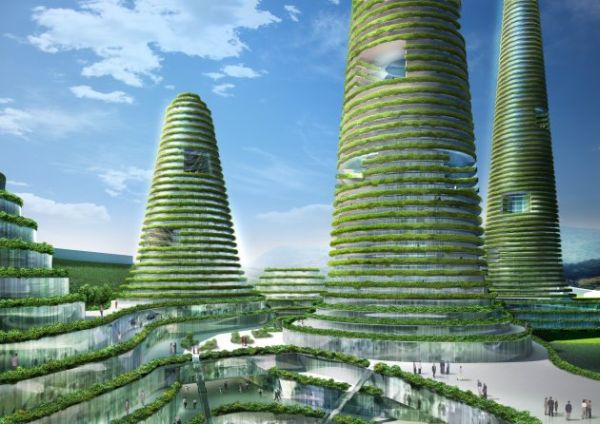
Our beloved Mother Earth is at stake, and disgracefully, we are the reason behind it. Our activities have affected our environment adversely, and it is still in the process. Its high time now, we should be bothered about the degrading environment and work towards its amelioration. Otherwise, we will be responsible for a precarious future, in which our upcoming generations will be staying.
The three basic features of our planet, which supports life on it, namely- Air, Water and Soil, are losing their quality owing to the various pollutants. There have been reports about the fact that the non-renewable sources of energy are fast depleting, which will lead to a major energy crisis in the near future. These, along with various other reports on our environment, has sent a series of jitters along various environmental organisations around the globe. Environment activists have become extremely concerned about it and has resulted in the creation of a concept, called Green City.
Green cities are concepts which includes construction of cities, with the help of various innovative techniques. These innovative techniques follow some parameters like, ecology balance, green energy harnessing, sustainable development, and all those which prevents our environment from deteriorating. So, now let us take a look at the 5 environment friendly cities of the future.
1. Crystal Island
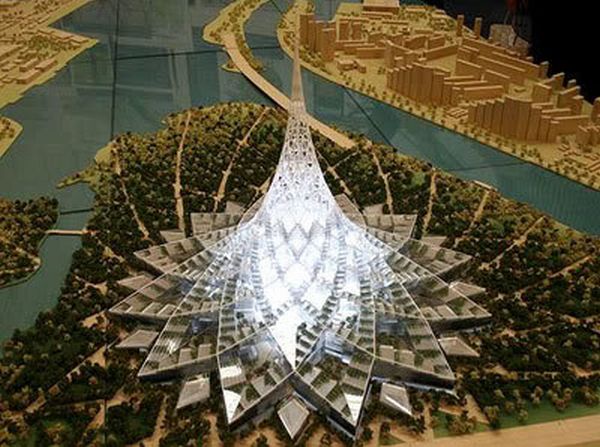
Crystal Island, upon completion, will be the world’s biggest building having a green city inside it. The assignment of constructing this edifice has been officially granted to be built at Moscow. To be precise, on the peninsula between between Moscow River and Andropov Avenue. The entire project has been initiated by Norman Foster, who is the founder and chairman of Foster + Partners. According to him, Crystal Island is one of the world’s most ambitious building projects and it represents a milestone in the 40 year history of the practice. It is a paradigm of compact, mixed-use, sustainable city planning, with an innovative energy strategy and ‘smart’ skin which buffers against climate extremes.
As the statistics of this building reads, It has been envisaged to achieve a height of 450 meters, and will be covering a floor area of approximately 2.5 million square meters and near half a million square meters. The total estimated cost of the building would be $4billion. From the outside, it may just look like a huge structure but it will actually be much more wider and spacious inside. It is supposed to hold 3000 hotel rooms, approximately 9000 active apartments. It will also have a school that will hold 500 students, exhibition centers, catering businesses and many more astonishing mini structures inside it.The electricity will be generated with the help of solar and wind energy, and for this purpose solar panels and wind turbines have already been fitted inside it.
2. Power Center
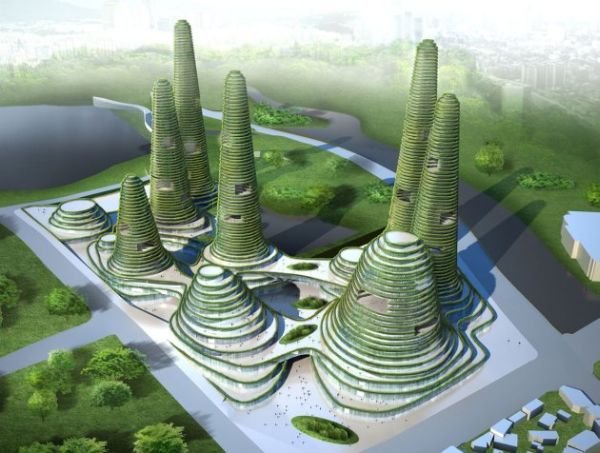
Looks like a bee-hive from a far away distance but when you get closer, it turns out to be a different scenario. This bee-hive, which is supposed to come up in South Seoul, will provide domicile to 77,000 inhabitants. Each node of Gwanggyo Power Center will have offices, houses, retails and many more sectors. It has been estimated that it will have approximately 200,000meter square housing, 48,000meter square of offices, 200,000 meter square would hold the culture, retail, leisure and education and the for the parking slot 200,000 meter square has been allotted.
The site is extremely serene, as it is surrounded by beautiful lake and hills. The project aims at improving the green quality of the surrounding to a much greater extent. The completion of this project has been scheduled in 2011.It is being built in a collaboration between Daewoo and MVRDV.
3. Green City in Singapore’s skyline

The whole of Singapore is eagerly waiting for the completion of the Green city, whose design won an international competition, based on Green complexes. The very renowned architectural firm Foster + Partners won the prize for this design, which is expected to be the leading Green complex in the world.
The walls of the towers of this massive structure will have solar cells that will filter the sun rays and will utilize it in generating solar energy. The building is shaped in such a way that it will be able to funnel down air on to the internal streets, inorder to keep the interior cool and cozy. This building will stand out exemplary, as far as environment protection is concerned. It has also been incorporated with several innovative techniques, that encourages greenery and a robust ecosystem. Some of them are – rainwater harvesting, geothermal heating, and various cooling mechanisms. It is going to be a paradise on Earth.
4. Masterplan for Nanjing, China by CK Designworks
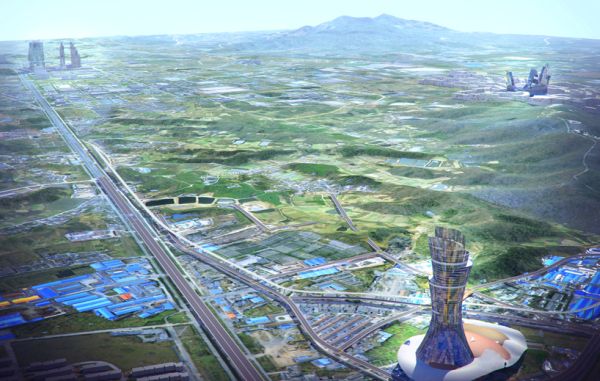
Pursuing a desire to be the foremost contributor in Greenery propagation, China has taken an initiative to build a Green city in the Pukou district of Nanjing. The responsibility for accomplishing this project has been given to an Australian firm, CK designworks.
According to some estimated facts, the square city will be covering an area of 20 square kilometers and will be housing 200,000 residents. It will have various Chinese cultural elements, a smart way to manifest them to the whole world. There will be a 5 star hotel, with the Leadership in Energy and Environmental Design (LEED) certification. The city will spread the message of ecology and environment protection by encouraging the harness of renewable energy and also would have many green plantations. This project includes an amalgamated manifestation of Greenery and Culture, and would definitely turn out to be a didactic one, for rest of the globe.
5. Lilypad – A green safe haven of the future
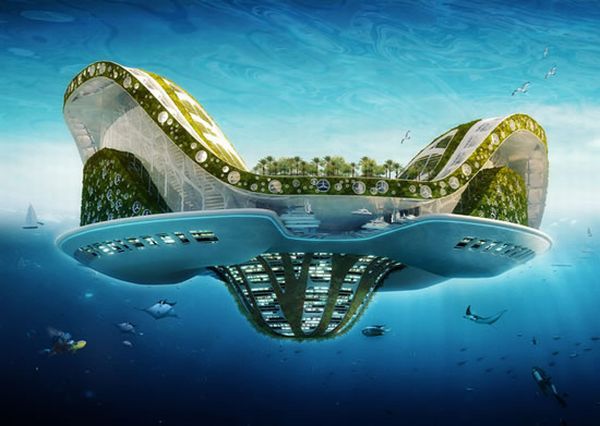
An impeccable destination for climate change refugees, Lilypad is supposed to be a zero emission city, which will float in the ocean. The design is inspired by that of a water Lily. According to Vincent Callebaut, the creator, It is a concept for a completely self-sufficient floating city intended to provide shelter for future climate change refugees. Each of the floating Lilypad will hold approximately 50,000 people in it.
It has been incorporated with various technologies – namely solar, wind, tidal, biomass – with the help of which it can produce its own energy. It can also process the atmospheric carbon dioxide and can inhale it through its skin, which is made up of titanium dioxide. Lilypad is covered in green walls and roofs on the three sides, and the top portion is covered with grasses. The inner portion has an oasis, and the underneath serves as a bed to various sea plankton and oceanic plants. The floating city will stay near the coasts or keep floating from the equator towards the water bodies of the Northern Hemisphere.



